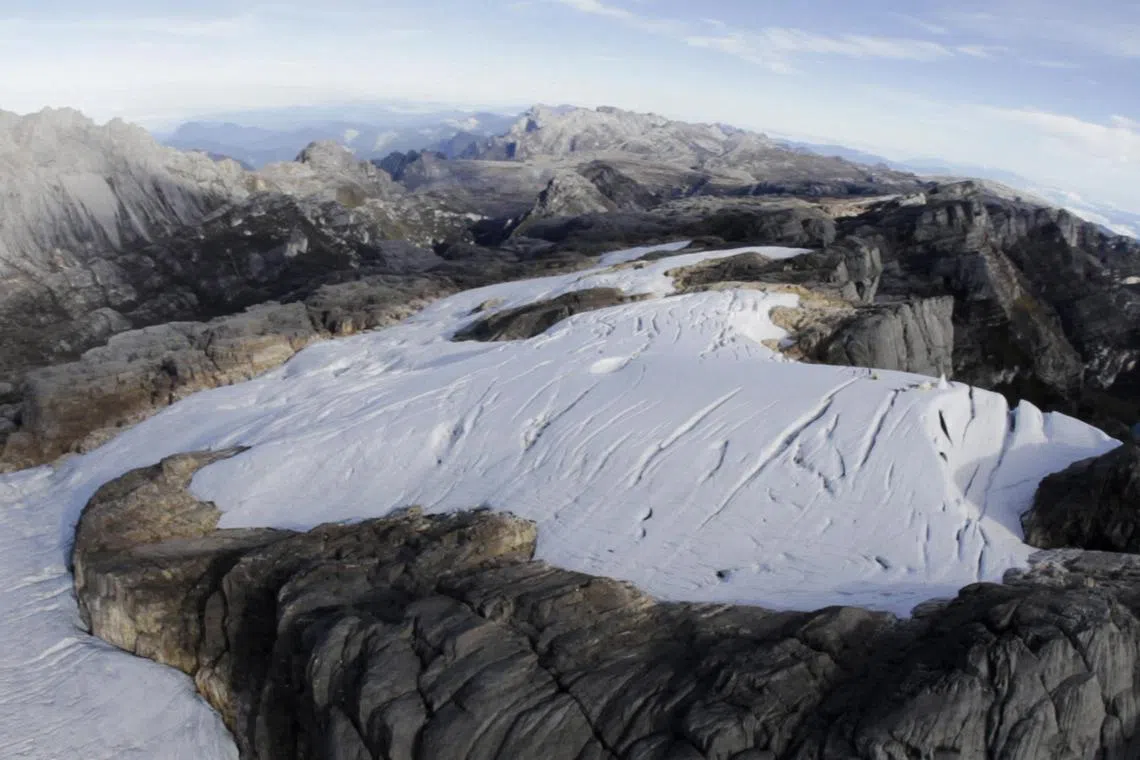El Nino could doom Indonesia’s rare tropical glaciers by 2026
Sign up now: Get insights on Asia's fast-moving developments

Indonesia's "Eternity Glaciers" have thinned significantly, going from 32m in 2010 to to 8m in 2021.
PHOTO: AFP
Follow topic:
JAKARTA - Two of the world’s few tropical glaciers in Indonesia are melting – their ice under threat to vanish by 2026 or sooner as an El Nino weather pattern
Indonesia, home to the world’s third-largest rainforest area after Brazil and Congo, expects that the dry season could run until October as El Nino increases the risk of forest fires
While the agency has warned that the Pacific weather phenomenon could make this year’s dry season the most severe since 2019, one of its climate researchers said it could also imperil Indonesia’s 12,000-year-old tropical glaciers.
“The glaciers may vanish before 2026, or even faster, and El Nino could accelerate the melting process,” said Dr Donaldi Permana, referring to the so-called “Eternity Glaciers”.
Both glaciers are in the Jayawijaya mountains in the easternmost region of Indonesia’s Papua, and are among the few left in the tropics, said Dr Donaldi.
One glacier is on the 4,884m-high Carstensz Pyramid mountain peak, while about 2.5km south-east to this is the East Northwall Firn glacier that is at an elevation of 4,700m.
The glaciers have thinned significantly in the past few years, Dr Donaldi said, going from 32m in 2010 to 8m in 2021, while their total area fell to 0.23 sq km in 2022, from 2.4 sq km in 2000.
But little can be done to prevent the shrinking, he said, adding that the event could disrupt the regional ecosystem and trigger a rise in the global sea level within a decade.
“We are now in a position to document the glaciers’ extinction,” said Dr Donaldi, a coordinator of BKMG’s climate research division. “At least we can tell future generations that we used to have glaciers.”
In addition to Papua, tropical glaciers may be found in the Andes of South America and the mountains of Kilimanjaro, Mount Kenya, and Rwenzory in Africa.
Indonesia is the world’s top exporter of coal, and aims to reach net-zero emissions by 2060.
Last year, it set an ambitious deadline of 2030 to cut emissions by 31.89 per cent on its own, or by 43.2 per cent with international support. REUTERS

